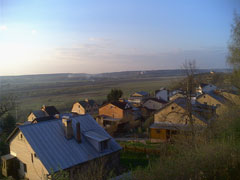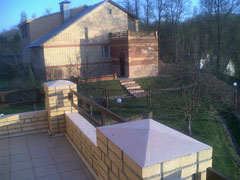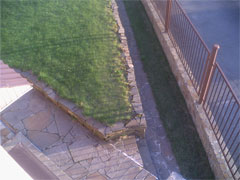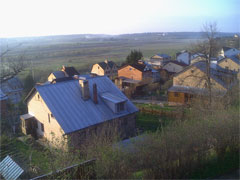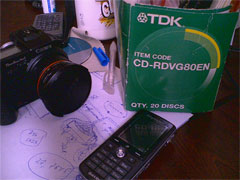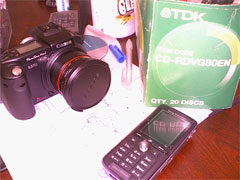|
|
Nokia N90 - 2 MP camera possibilities
Review GSM/UMTS-smartphone Nokia N90>>>
As different to other N-series models the N90 uses glass optics by Carl Zeiss. The company claims the fact as a great advantage over all the models present on the market including own developments. Considering a small size of the camera module we can't speak about its qualitative realization even on the level of usual digital cameras. The device remains a phone with some functions of a camera and not vice versa. Comparing the photos taken by the N90 and the N70 we see a slight advantage of the first one, the photos are clearer and sharper in small details. That's hard to say it is achieved with the help of the button. It seems that using the Carl Zeiss name well known for qualitative objectives and optics is an example of co-branding. The company gains the maximum of attention to its device by this marketing lead and acts with an approved precision. Now there are few 2MP cameras and that's why it would be logical to compare the N90 with the Sony Ericsson
K750. I'll stress again the devices have little in common except for the camera. They refer to different price segments and comparing seems incorrect (if, of course, you don't care about the 200 Euros gapЕ). I suggest closing the theme of the Sony Ericsson K750 and Nokia N90 comparison once and for all, they are too different and targeted on different market segments.

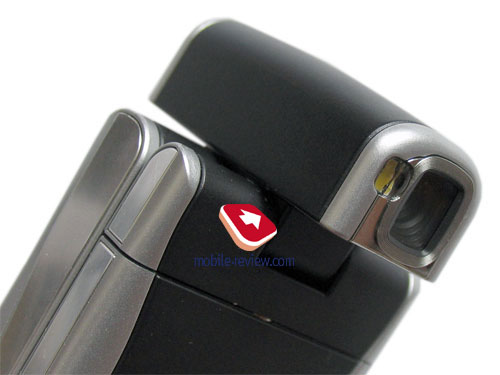
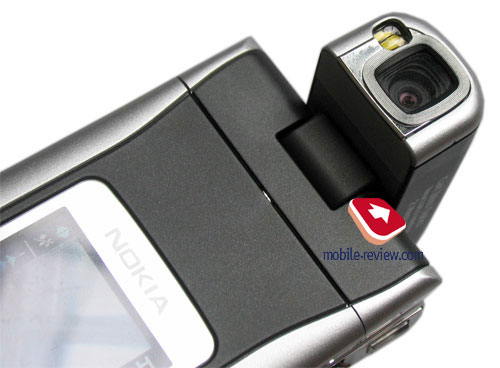

Camera mode. When the device is closed you can turn the camera block from you to set it perpendicular to the clamshell plane. The camera is automatically activated; the external screen placed on your side shows a viewfinder. A side joystick is used for fast change of the settings. The fact it's placed close to the camera module makes it more difficult to work with one hand. Shooting is possible with the button placed near the joystick, everything is quite clear. A resulting photo may be seen on the screen at once. Video can't be recorded from this mode, only photos.
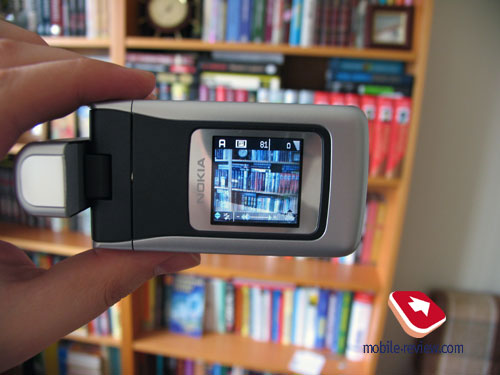
The second mode supposes working with the internal screen, the picture quality is much higher, it's more comfortable to use. Unfold the upper part of the clamshell and turn the screen. It may be either at right angles to the body or a bit slanting like video cameras. The last way is comfortable when holding the device below the eye level; the picture is shown better foreshortened. The external screen works at that time, the picture with the camera view remains on it and it doesn't turn off.
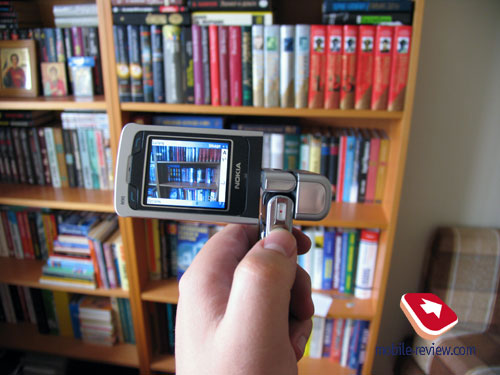
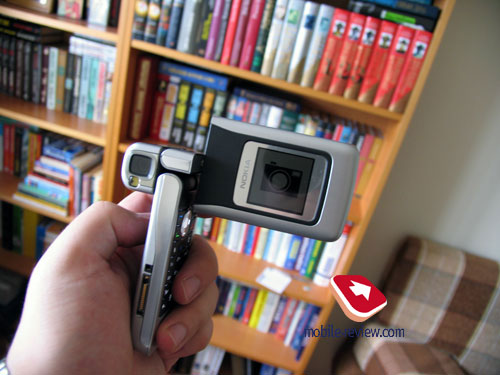
The camera start time at the module turned into the working mode or the upper part rotation forms about 1-2 seconds, that is the time spent on the viewfinder activation.
Two buttons are placed to the left, they serve for selecting menu items (one of them is Gallery, though its presence here seems inexplicable), various settings. That's curious the joystick calls the menu but leaving it after some item was chosen is possible only by the left buttons. This control spread is sometimes uncomfortable and doesn't let changing the settings quickly, though not playing any role in the automatic mode.

The main disadvantage is incorrect start of the camera mode at the module rotation sometimes. The device can't process too fast action. The advantage of the rotational screen is that the phone is ideal for spy shooting. Despite the dimensions the rotational module allows changing the viewing angle quickly and direct the camera to the ceiling, the floor or wherever you like. The people around don't take the N90 for the camera. They think you look through your messages and you can record video, take photos at that time. And what is curious the shutter sound may be turned off - thus you get noiseless.
Control elements, interface, autofocus
The shutter button is relatively tough but is still comfortable to work with in the camera mode with the folding screen, the device quite fits one hand. The presence of the autofoctus needs two modes of the shutter button work, particularly, short slight pressure means focusing on the object and pressing to the end means taking a photo. The button is tough and brought some troubles for women. The weight also tells upon and working with one hand is not quite comfortable. However most men don't see any problem here, everything is quite plain.
Focus is foreseen only in the central position. It is pointed out with bracket on the screen. Good focusing is indicated with the brackets coloured in green. Focusing takes one-two seconds depending on the surrounding conditions. The device can't focus on monochrome objects filling the central place. For instance, if shooting a white building, a shit of paper on the table then the autofocus is very likely not to work. White and black colours make the main problems; the device focuses on tint palettes better.
An interesting shooting effect is observed within small distances (up to 5 cm), the camera switches to macromode automatically. And focusing is possible not only on the central point in this mode. The mode was found by chance and it shows the company works on several points' focus, we are undoubtedly unlikely to see it in this model but that is a preparation for the future. The sample photos show the device focused on the background first time and then on a bottle of mineral water. In both cases the distance and the target was the same.
Sample
photos with background focus, 1600x1200, JPEG, High,
359 б
The same one with a normal focus, 1600x1200, JPEG, High, 373 б
The technical characteristics of the objective are the following - the aperture forms f/2.9, the focus distance is 5.5 mm. The diapason the autofocus works for sure - from 10 cm. Though the camera shows perfect results in the macromode even at the distance of 2 cm.
That is the first time the company focused on the camera interface; it is one the level of the best works. First, it got horizontal for a folding screen mode. Second, the number of the settings that were not available even on the previous 1.3 MP cameras grew rapidly. That's important, loading the menu with the camera settings takes 2-3 seconds, when moving along the menu the delay forms a second or more. This slow interface work may be connected with two things. The first reason coming into my mind is the device is rather row and the commercial launch of the phone will show if it's true. The second supposition concerns the camera module disposition. As different from other models not only the objective but the entire electronics responsible for the camera work is placed outside the main plate, which is an autofocus and camera setting. Probably, this slow interface work is connected with the necessity of data transmission from the camera module and back. The number of connectors between the camera module and the device itself is quite numerous, that is a plait of several lines. Then we can expect the productivity increase when the settings are changed, though it will still remain a bit slower than the device interface.
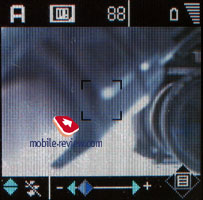
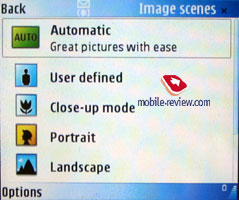 
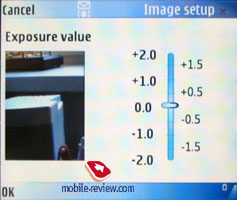
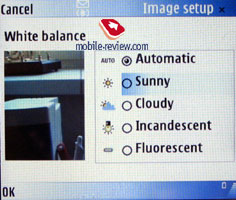


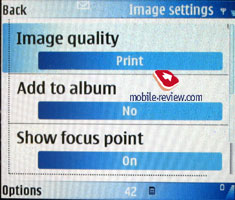
The following settings are present in the menu:
Scene - setting the shooted scene, automatic mode is on by default. It works well and needs no manual tuning. There are several shooting modes for those experienced ones - Close-Up Mode, Portrait, Landscape, User Defined, Sport, and Night. The number of settings is comparable to digital cameras and in mobile phone world only Sony Ericsson S700, K750 can show the same.
Flash - works either automatically or with an effect of red eye suppress, the flash may be on or off also. The manufacturer claims an effective distance of 1.5 m. In our case the optimal results were gained at the distance of 1 m. At a closer distance the frame is spoiled. In general the flash is too weak for the CMOS-matrix possibilities. The last makes good photos even in poor light, they really look better than taken using the flash.
White balance - is determined automatically. There are several extra modes - Sunny, Cloudy, Incandescent, Fluorescent, Tungsten. The plus of the interface is some part of the image is always seen so that you can see the picture changing depending on the selected mode.
Exposure value ranges from -2 to +2 with the step forming 0.1. The changes applied are also instantly seen on the viewfinder picture.
Colour Tone - the number of colour modes is high, black and white, Negative and Sepia besides usual colour. There is no need in the effects, since the photos may be changed in the editor later.
The following settings should be mentioned:
Choosing a resolution - 1600x1200, 800x600 and 640x480 pixels. The higher one is called Print.
Shooting mode - usual, series, timer.
Zoom is activated by the joystick deviations, it is x20 digital. A sample of zoom work may be seen in the archive, ZIP, 282 KB. Using it either makes no sense, since the integrated editor allows increasing a usual photo in the view mode and the quality will be higher.
The exposure was changed from +2 to -2, the longer exposure photos look very interesting, turning into some kind of a state-of-the-art. Exposure working samples in the archive, ZIP, 2.7 MB.
Various colour effects, ZIP archive, 1.1 MB.
Several pictures taken with the device for an Amsterdam presentation are preset in the phone. At any case, the company assures the photos haven't been edited. We'll provide the photos, they look perfect but we failed achieving the same quality in real conditions with no of the tested devices. Moreover, many people tried to shoot the same objects during the presentation, but the result was significantly worse than of the represented photos.
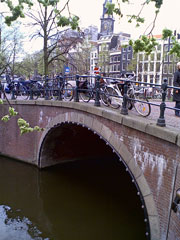 |
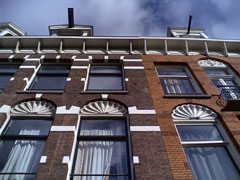 |
(+)
increase, 1600x1200, JPEG |
(+)
increase, 1600x1200, JPEG |
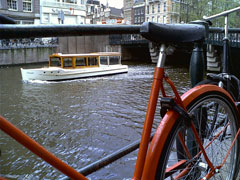 |
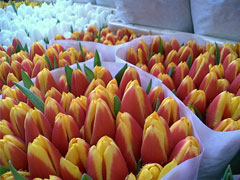 |
(+)
increase, 1600x1200, JPEG |
(+)
increase, 1600x1200, JPEG |
 |
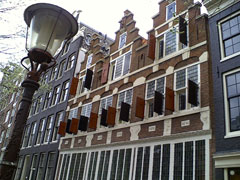 |
(+)
increase, 1600x1200, JPEG |
(+)
increase, 1600x1200, JPEG |
 |
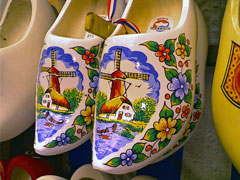 |
(+)
increase, 1600x1200, JPEG |
(+)
increase, 1600x1200, JPEG |
 |
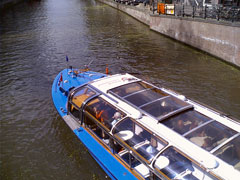 |
(+)
increase, 1600x1200, JPEG |
(+)
increase, 1600x1200, JPEG |
We'll start representing the camera possibilities with several photos taken from the car window in a dull rainy weather. The photos are max resolution and quality. When compared with the Ericsson K750i both devices were focused on the same point automatically.
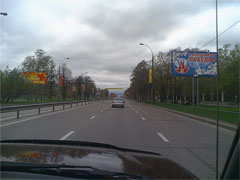 |
 |
(+)
increase, 1600x1200, JPEG |
(+)
increase, 1600x1200, JPEG |
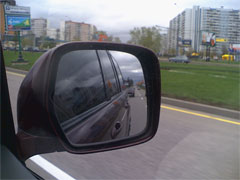 |
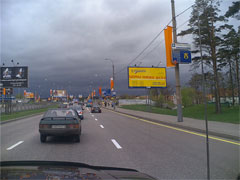 |
(+)
increase, 1600x1200, JPEG |
(+)
increase, 1600x1200, JPEG |
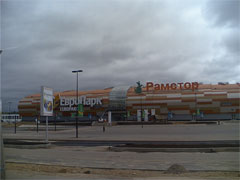 |
 |
(+)
increase, 1600x1200, JPEG |
(+)
increase, 1600x1200, JPEG |
The indoors photos look not as representative, especially in a poor light.
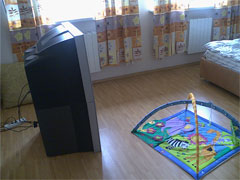 |
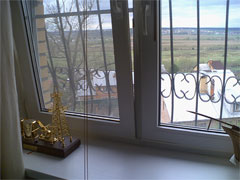 |
(+)
increase, 1600x1200, JPEG |
(+)
increase, 1600x1200, JPEG |
 |
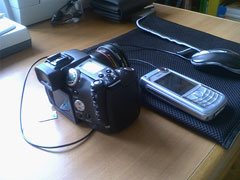 |
(+)
increase, 1600x1200, JPEG |
(+)
increase, 1600x1200, JPEG |
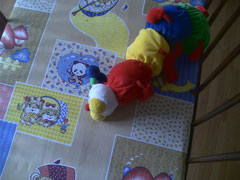 |
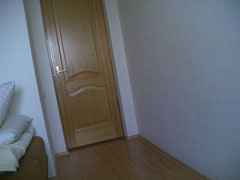 |
(+)
increase, 1600x1200, JPEG |
(+)
increase, 1600x1200, JPEG |
And outdoors shooting in a sunny day shows completely different results.
Flash working examples.
Let's pass to comparing the photos. We'll provide them with no special comments and I think everyone will see everything by his own and estimate the quality in both cases. And some curious information first. We carried out a small research - distributed unsigned photos (both on the screen and printed photos were demonstrated) taken with the K750 and the N90 among a group of 20 people. Macromode pictures didn't take part due to the evident Nokia N90's advantage. All the participants listened to a short review of the main characteristics of the devices.
The results of the poll showed 60 percent of the people find the K750 quality higher. We asked to sign the photos trying to guess which device was used. That's interesting 70 percent of the participants pointed out the Nokia N90 for the most interesting photos.
The second group with the same number of the participants had the same task but the photos were signed up from the beginning. And an interesting effect was also observed here - up to 80 percent of the people chose the photos by the N90 as the best. This choice was mainly based on the brand name and less on the quality of the print. The research carried out shows not only objective information but a manufacturer's image formed by the ads and marketing really affects out choice.
Here are the photos. Pay attention to the background details, particularly posters. In the K750i's case you'll be able to distinguish some characters and in the N90's case they merge. The conclusion is the details are worse worked over in the N90, especially concerning landscape views and the background.
The house corner and the sky Ц Sony
Ericsson K750, Nokia
N90
A white car - Sony
Ericsson K750, Nokia
N90
A shop window - Sony
Ericsson K750,
Nokia N90
A view of the Leninsky prospect - Sony
Ericsson K750, Nokia
N90
Restoration works - Sony
Ericsson K750, Nokia
N90
A fruit stall - Sony
Ericsson K750, Nokia
N90
Both devices show comparable photos in the macromode in a distance of about 4 cm. In a closer distance the Nokia N90 undoubtedly wins. Remember, in the K750 you have to activate the mode from the menu and it's unnecessary in the N90.
A barometer on the book shelf - Sony
Ericsson K750, Nokia
N90
V3 RAZR keyboard - Sony
Ericsson K750, Nokia
N90
Nokia 6021 keyboard - Sony
Ericsson K750, Nokia
N90
Memory card - Sony
Ericsson K750, Nokia
N90
Asus logo on the notebook - Sony
Ericsson K750, Nokia
N90
So, only video possibilities are still to tell about. The format is 3GP and the frequency forms 15 frames/minute, the max resolution is 352x288 pixels. In the max resolution and quality the pictures is ragged, video is not of a good quality. And no improvements are foreseen. The examples of Nokia video also show all the possibilities are impossible to drag out. During video recording 8x zoom works.
Sample
video by Nokia, a couple in the garden Ц 1.83 MB
Sample
video by Nokia, a girl in the flowers Ц 2.13 MB
Sample
video by Nokia, blowing kisses Ц 1.54 MB
Sample
video, a road from the car window Ц 3.8 MB
Sample
video, a road from the car window Ц 1.79 MB
Impressions
The 2 MP camera possibilities of the N90 are quite good. The picture quality is one of the best on the market and there are not many models. The direct comparison with the Sony Ericsson K750 shows better detail processing in case of the last device but worse work in a close distance. The presence of glass optics by Carl Zeiss is more a marketing measure than a necessity. As for me, the optics doesn't improve the picture quality cardinally.
Changing the interface to the one with clearer icons and fast mode switch is a significant step forward especially against a background of the previous devices. Video recording remains low-priority function, phone productivity is not enough for qualitative data flow encoding. Some improvements in this field will be observed only in autumn next year.
XpressPrint is an interesting function to mention. A photo may be sent to an HP printer and it will be printed in no time. The printing quality is not bad, rather appropriate for a 10x14 cm homemade photo. By the way, the printed photos by 750 and N90 do not differ greatly which is opposite to viewing on a PC screen. I'll remind even unclear photos look perfect on the N90's screen due to the screen possibilities.
The Sony Ericsson K750 and Nokia N90 are of great interest as the first representatives of the 2MP cameraphones and what is the main they are curious to compare. Only cameras may be compared in these models. All the rest characteristics are much different and the devices belong to different price segments. As for such characteristics as size and camera possibilities the N90 belongs to the Sony Ericsson S700 class. Nokia developers took well-taken solutions of the model and, particularly, the interface organization.
Considering Nokia attempts of launching new solutions as soon as possible the N90 will go under this concept. No picture quality improvements will happen despite the hopes of many brand worshipers (but if it happens, it will be those statistic 5 percents). Why to improve quite a deserving quality that is the maximum for today?
Review GSM/UMTS smartphone Nokia N90>>>
Video:
Working with the Nokia N90 camera (1.97 MB)
Eldar Murtazin (eldar@mobile-review.com)
Translated by Maria Mitina (maria.mitina@mobile-review.com)
Published — 29 May 2005
Have something to add?! Write us... eldar@mobile-review.com
|
News:
[ 31-07 16:21 ]Sir Jony Ive: Apple Isn't In It For The Money
[ 31-07 13:34 ]Video: Nokia Designer Interviews
[ 31-07 13:10 ]RIM To Layoff 3,000 More Employees
[ 30-07 20:59 ]Video: iPhone 5 Housing Shown Off
[ 30-07 19:12 ]Android Fortunes Decline In U.S.
[ 25-07 16:18 ]Why Apple Is Suing Samsung?
[ 25-07 15:53 ]A Few Choice Quotes About Apple ... By Samsung
[ 23-07 20:25 ]Russian iOS Hacker Calls It A Day
[ 23-07 17:40 ]Video: It's Still Not Out, But Galaxy Note 10.1 Gets An Ad
[ 19-07 19:10 ]Another Loss For Nokia: $1 Billion Down In Q2
[ 19-07 17:22 ]British Judge Orders Apple To Run Ads Saying Samsung Did Not Copy Them
[ 19-07 16:57 ]iPhone 5 To Feature Nano-SIM Cards
[ 18-07 14:20 ]What The iPad Could Have Looked Like ...
[ 18-07 13:25 ]App Store Hack Is Still Going Strong Despite Apple's Best Efforts
[ 13-07 12:34 ]Infographic: The (Hypothetical) Sale Of RIM
[ 13-07 11:10 ]Video: iPhone Hacker Makes In-App Purchases Free
[ 12-07 19:50 ]iPhone 5 Images Leak Again
[ 12-07 17:51 ]Android Takes 50%+ Of U.S. And Europe
[ 11-07 16:02 ]Apple Involved In 60% Of Patent Suits
[ 11-07 13:14 ]Video: Kindle Fire Gets A Jelly Bean
Subscribe
|






































